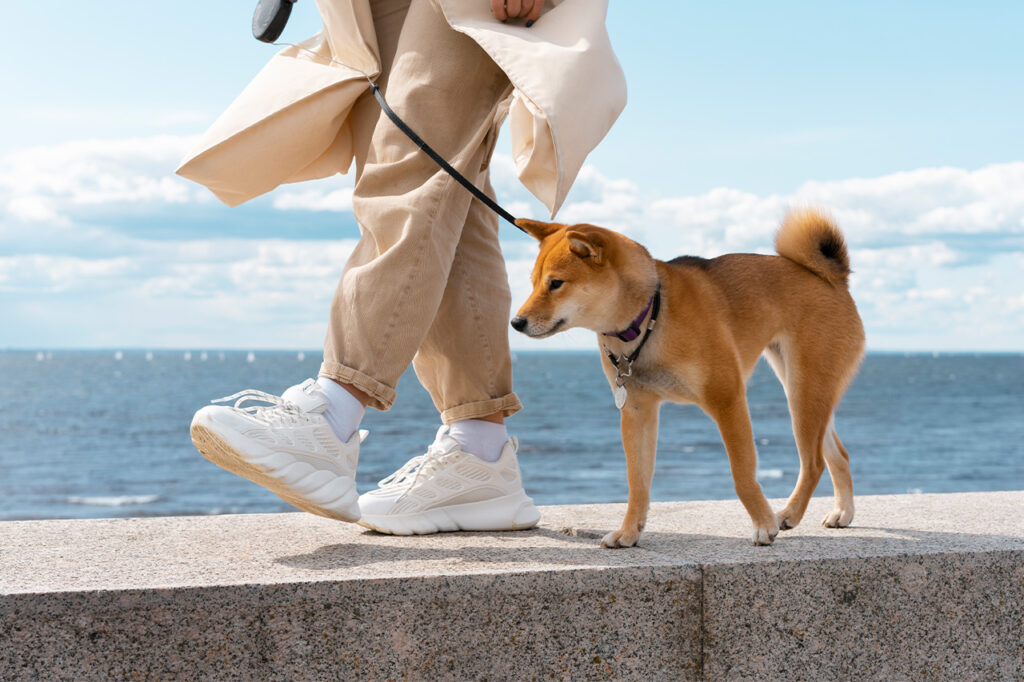Walking your dog is more than just a bathroom break—it’s a vital part of their physical and mental well-being. But how long should you walk your dog each day? The answer depends on several factors, including breed, age, and overall health. This guide will help you understand your dog’s exercise needs and how to tailor a walking routine that keeps them happy and healthy.
Why Regular Walks Are Essential for Dogs
Daily walks are crucial for a dog’s overall quality of life. They provide:
- Physical Exercise: Regular movement helps maintain a healthy weight and strengthens muscles.
- Mental Stimulation: Exploring new scents and environments keeps your dog mentally engaged.
- Behavioral Benefits: Consistent walks reduce anxiety and destructive behaviors caused by boredom.
How Long Should You Walk Your Dog?
The ideal walk duration depends on your dog’s age, breed, and energy level. Here’s a breakdown to guide you:
Puppies: Short and Frequent Walks
Puppies are energetic but have developing joints, requiring shorter, controlled exercise.
- Guideline: 5 minutes of walking per month of age, twice daily.
- Example: A 4-month-old puppy should get around 20 minutes of walking, twice a day.
- Tip: Avoid overexertion to protect developing bones and joints.
Adult Dogs: Consistent and Balanced Exercise
Most adult dogs thrive with regular, moderate exercise to stay fit and mentally stimulated.
- Guideline: 30 to 60 minutes of walking daily, split into one or two sessions.
- High-Energy Breeds (e.g., Border Collies, Huskies): May need 1 to 2 hours of vigorous exercise.
- Low-Energy Breeds (e.g., Bulldogs, Pugs): 20 to 40 minutes of relaxed walking is sufficient.
Senior Dogs: Gentle and Adapted Walks
Older dogs may require less strenuous activity but still benefit from daily movement.
- Guideline: 20 to 40 minutes of gentle walks daily.
- Tip: Watch for signs of discomfort and adjust the pace as needed.

Breed-Specific Walking Needs
Different breeds have unique energy levels, which influence how much exercise they need.
- High-Energy Dogs: Labrador Retrievers, German Shepherds, and working breeds need 60 to 90 minutes of vigorous activity daily.
- Moderate-Energy Dogs: Spaniels and medium-sized breeds usually need 40 to 60 minutes.
- Low-Energy Dogs: Toy breeds and brachycephalic dogs may need only 20 to 30 minutes.
Health Considerations When Walking Your Dog
A dog’s health condition plays a crucial role in determining their exercise routine.
- Joint Issues: Dogs with arthritis benefit from short, slow walks on soft surfaces.
- Weight Management: Regular walks are key to preventing obesity and related health issues.
- Heat Sensitivity: Brachycephalic dogs (like Pugs) should avoid strenuous walks in hot weather.
Best Times of Day to Walk Your Dog
Timing can affect your dog’s comfort and safety during walks.
- Morning and Evening: Ideal for hot climates to avoid heat-related stress.
- Midday: Suitable for cooler months or older dogs needing warmth.
- After Meals: Wait 30 minutes to 1 hour to prevent digestive issues like bloat.

Signs Your Dog Needs More (or Less) Exercise
Watch your dog’s behavior to gauge if they need adjustments to their walking routine.
Signs of Insufficient Exercise:
- Restlessness or hyperactivity
- Destructive behavior (chewing, digging)
- Weight gain
Signs of Overexertion:
- Excessive panting
- Limping or stiffness
- Reluctance to walk
Tips for a Successful Dog Walking Routine
- Use Proper Equipment: A comfortable harness and sturdy leash enhance control and safety.
- Allow Exploration: Let your dog sniff and explore for mental stimulation.
- Stay Consistent: Regular routines reduce anxiety and improve behavior.
- Monitor Health: Adjust walk intensity based on your dog’s age and health.
Final Thoughts
Understanding your dog’s unique exercise needs ensures a happier, healthier companion. By tailoring the walk’s duration and intensity to your dog’s age, breed, and health, you provide the physical and mental stimulation they need to thrive.
Enjoyed this post? Visit timmypets.com for more pet care tips, stories, and expert advice. Follow us on social media to stay connected and never miss an update!


